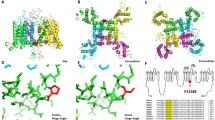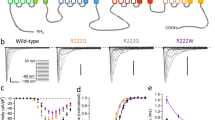Abstract
Hypokalemic periodic paralysis (HypoPP) is a skeletal muscle disorder in which episodic attacks of muscle weakness occur; they are associated with decreased serum potassium (K+) levels. Recent molecular approaches have clarified that the condition is caused by mutations in the skeletal muscle voltage-gated calcium channel 1 subunit (CACNA 1S). We describe two unrelated patients with HypoPP, followed by their relevant clinical studies and gene analysis. Clinical studies included an oral glucose tolerance test (OGTT), food-loading and insulin tolerance tests (ITT). For Case 1, serum K+ levels were extremely decreased following insulin tolerance testing compared with levels for controls. These results support the hypothesis that no efflux of K+ ion occurs in patients because of low activity of adenosine triphosphate (ATP)-sensitive K+ channel (KATP) channels. Mutational analysis of the CACNA 1S gene showed a duplicate insertion of 14 base pairs (bp) from 52 to 65 in intron 26, present in the heterozygous state in both patients. No other mutations were detected in the CACNA 1S gene, the muscle sodium channel gene (SCN 4A) or the voltage-gated K+ channel gene (KCN3) of either patient. Further analysis showed that this duplicate insertion of 14 bp in intron 26 of the CACNA 1S gene was found in 23.7% of healthy subjects. K+ dynamics studies are useful for confirming this syndrome, while further gene analysis for various ion channels using amplification and direct sequencing are required to evaluate the molecular basis of the disorder in the individual patient.
Similar content being viewed by others
References
Kawamura S, Ikeda Y, Tomita K, Watanabe N, Seki K. A family of hypokalemic periodic paralysis with CACNA1S gene mutation showing incomplete penetrance in women. Intern Med 2004, 43: 218–22.
Ptacek LJ, Tawil R, Griggs RC, et al. Dihydropyridine receptor mutations cause hypokalemic periodic paralysis. Cell 1994, 77: 863–8.
Jurkat-Rott K, Mitrovic N, Hang C, et al. Voltage-sensor sodium channel mutations cause hypokalemic periodic paralysis type 2 by enhanced inactivation and reduced current. Proc Natl Acad Sci USA 2000, 97: 9549–54.
Abbott GW, Butler MH, Bendahhou S, Dalakas MC, Ptacek LJ, Goldstein SA. MiRP2 forms potassium channels in skeletal muscle with Kv3.4 and is associated with periodic paralysis. Cell 2001, 104: 217–31.
Miller TM, Dias da Silva MR, Miller HA, et al. Correlating phenotype and genotype in the periodic paralyses. Neurology 2004, 63: 1647–55.
Brooks C, Robinson RL, Halsall PJ, Hopkins PM. No evidence of mutations in the CACNA1S gene in the UK malignant hyperthermia population. Br J Anaesth 2002, 88: 587–9.
Tricarico D, Mallamaci R, Barbieri M, Conte Camerino D. Modulation of ATP-sensitive K+ channel by insulin in rat skeletal muscle fibers. Biochem Biophys Res Commun 1997, 232: 536–9.
Lin SH, Hsu YD, Cheng NL, Kao MC. Skeletal muscle dihydropyridine-sensitive calcium channel (CACNA1S) gene mutations in Chinese patients with hypokalemic periodic paralysis. Am J Med Sci 2005, 329: 66–70.
Carsana A, Fortunato G, De Sarno C, Brancadoro V, Salvatore F. Identification of new polymorphisms in the CACNA1S gene. Clin Chem Lab Med 2003, 41: 20–2.
Striessnig J, Hoda JC, Koschak A, et al. L-type Ca2+ channels in Ca2+ channelopathies. Biochem Biophys Res Commun 2004, 322: 1341–6.
Morrill JA, Brown RH Jr, Cannon SC. Gating of the L-type Ca channel in human skeletal myotubes: an activation defect caused by the hypokalemic periodic paralysis mutation R528H. J Neurosci 1998, 18: 10320–34.
Tricarico D, Servidei S, Tonali P, Jurkat-Rott K, Camerino DC. Impairment of skeletal muscle adenosine triphosphate-sensitive K+ channels in patients with hypokalemic periodic paralysis. J Clin Invest 1999, 103: 675–82.
Author information
Authors and Affiliations
Corresponding author
Rights and permissions
About this article
Cite this article
Kageyama, K., Terui, K., Tsutaya, S. et al. Gene analysis of the calcium channel 1 subunit and clinical studies for two patients with hypokalemic periodic paralysis. J Endocrinol Invest 29, 928–933 (2006). https://doi.org/10.1007/BF03349199
Accepted:
Published:
Issue Date:
DOI: https://doi.org/10.1007/BF03349199




